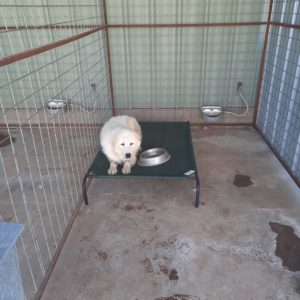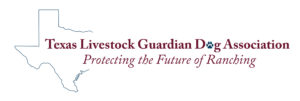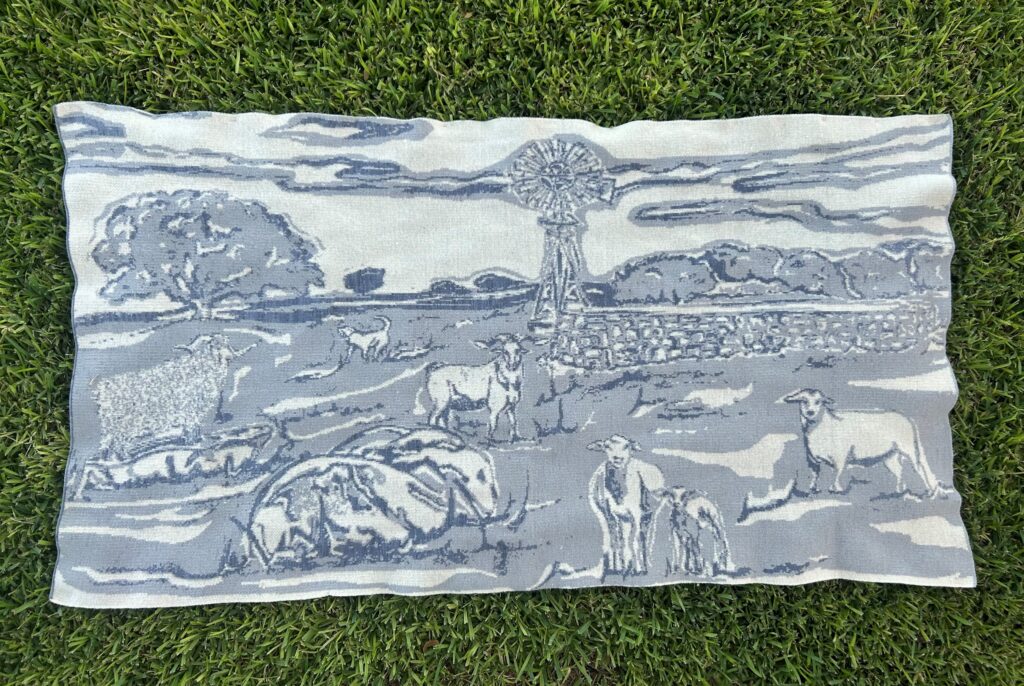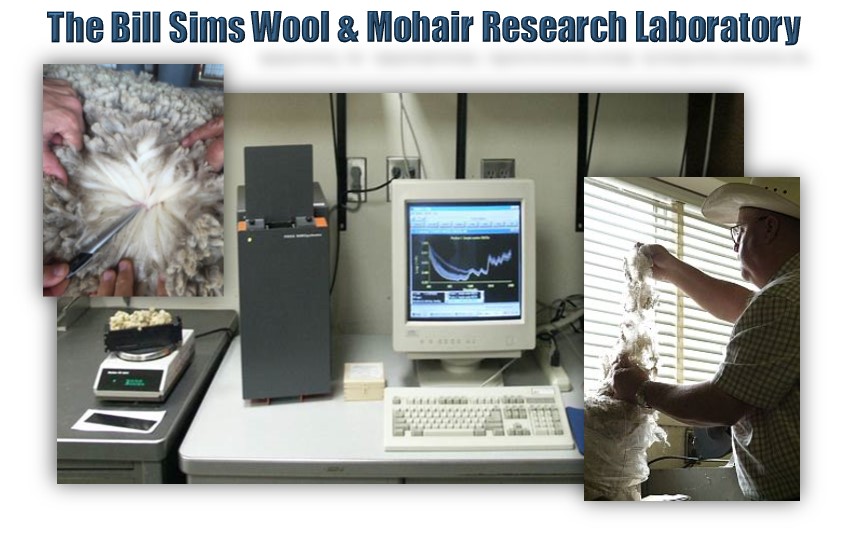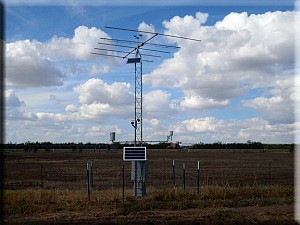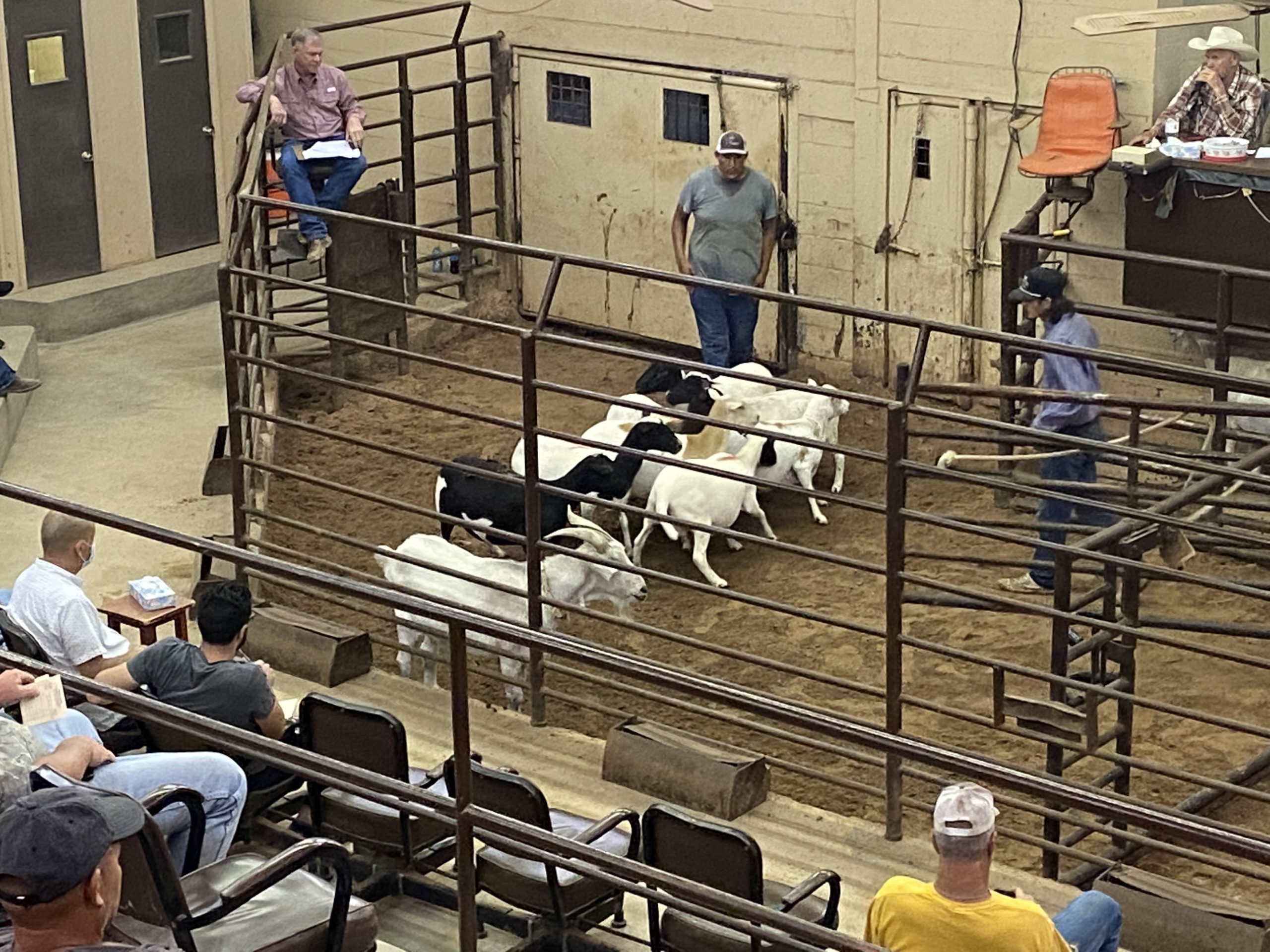The cooler temperatures of fall are here, and it has brought some much-needed rain to the San Angelo area. Hunting season has started as well and with that comes plans for dealing with LGDs. Make sure you talk to your hunters about the LGDs on your ranch. Remind them not to feed the dogs or encourage them to hang out near camp or hunting blinds. It can also help to focus hunting efforts on pastures away from livestock and LGDs, although this is not always possible. Try to keep gut piles in locations away from pastures with your LGDs or near hunting camp. Also, if possible, kennel your LGDs on weekends when hunters are on the ranch. This will stop problems between the dogs and the hunters along with giving your LGDs some time to rest. Kenneling can help to get your LGDs body condition score up for the winter ahead. Your LGDs should be in a BCS of 4 or greater going into the winter and a BCS of 5 or greater starting in the spring for lambing and kidding season.
AgriLife Livestock Guardian Dog Program: Events and Update
We had a great visit from Dr. Linda Van Bommel of the Fenner School of Environment and Society Australian National University on Oct. 14. We gave Dr. Van Bommel a tour of the Sonora Station and the AgriLife Center. She had a chance to see several of our dogs and the bonding pens in San Angelo. Several faculty and staff presented their current research projects that day as well.
Dr. Van Bommel has written an excellent handbook to help producers effectively use livestock guardian dogs. One surprising fact that we discussed was that Australian producers use predominately Maremma’s as their LGDs. There are also a few Anatolian Shepherds being used but no other breeds are used to guard livestock in Australia. The main predator’s ranchers deal with in Australia are dingo’s, feral dogs, feral cats, raptors, and foxes. The predator pressure in the higher sheep producing regions of Australia is much lower than what we face in Texas, however.
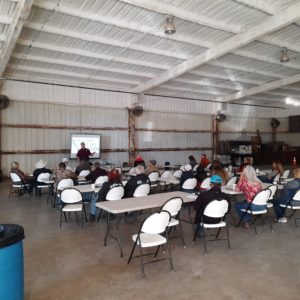
Workshop presented by Dr. Redden, Texas A&M AgriLife Extension Sheep and Goat Specialist. (Texas A&M AgriLife photo courtesy Costanzo 2022)
We held our Fall LGD Field Day on Oct. 21 in Hamilton County at the Jayson Harris Pavilion. Over 25 producers from across Texas attended the event. The crowd at the event was filled with questions related to LGDs during the workshops. The field day ran from 8 a.m.-4 p.m. and consisted of several workshops, a producer panel, and a local ranch tour provided by Dr. Allen Mc Analley. Several vendors were also onsite for producers to visit with. We would like to thank AgriLife Extension agent Bruce Boyd for hosting the event this fall. We would also like to thank the following businesses and associations for generously sponsoring the event:
Gold Sponsors:
Hamilton Farm & Ranch Invisible Fence Brand Lee Health Care
Melanie J Financial MICOBE Inc. Nestle Purina
Pfluger Herefords LLC Sheep & Goat Predator Management Board
The Partin Agency The Parts Store Watson’s Ranch & Farm
Silver Sponsors:
C&F Steel Company Hamilton County Farm Bureau Insurance
Mc Gregor Real Estate Pfeiffer Ranch Shue E Tan CPA
Tractor Supply – San Angelo
Exhibitors:
Ag Southwest Rainfall Insurance Krazy Goat Socks Lone Star Tracking
Sheep & Goat Predator Management Board Texas LGD Association
Wenzel Lonestar Meat Company
LGDs & The Bonding Project Update
Round Four Pups
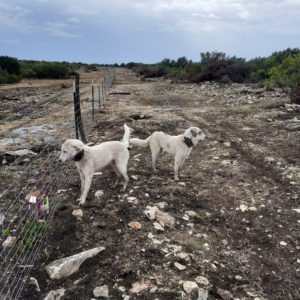
Jan (left) and Betty waiting for some treats during a producer visit. The producer is very happy with how both dogs are performing. (Texas A&M AgriLife photo courtesy Costanzo 2022)
Pups from round four of the bonding project are all doing well and still growing. In early October we had four of the pups (Fred, Dolly, Bobby, and Trisha) returned to us. The cooperating producer felt that the dogs may be killing his adult livestock. Pictures from the dead livestock were reviewed by our wildlife specialist and he was doubtful that it was caused by LGDs. All four dogs have been observed with ewes and lambs for over a month at the Center. No animals have shown any type of bite marks nor has rough play been observed. The four dogs are scheduled to go out to another cooperating producer in Rocksprings in early November. We will keep you posted on how the four dogs are doing and how well they protect their new livestock charges.
A few of the pups that were not bonded in hot wire are randomly patrolling outside of their pastures at cooperating ranches. All four of the pups have returned on their own each time they have left. None have been stayed outside their intended pasture for more than 45 minutes to date. Both producers have stated that the dogs have been chasing coyotes or feral hogs when they have left the ranches. We prefer that the dogs always stay within pasture boundaries. We are monitoring these four dogs’ behaviors to see if they continue to return on their own.
Adult Dogs
Sara and Sally will be returned to Menard in early November after being in the Invisible Fence System for retraining for three months. We will track the pups to see if they start roaming again once they are released at the ranch. The system has worked well at retraining Doc and Thelma. Hopefully Sara and Sally will no longer roam outside of the ranch boundaries as well.
Johnny was brought back to the Center to rebond with some yearling Dorper ewes for a couple weeks. Johnny was returned with the sheep back to Menard in late October. We have been having issues with low lamb crops in the sheep flock, likely due to feral hogs and sheep scattering in small groups across the ranch. With the drought and predation complications, the mature ewes from the Martin Ranch were brought to San Angelo to lamb out this fall along with Doc. Thelma will join Doc in November to provide adequate protection for the ewes and lambs at the Center once she has fully recuperated from her Ehrlichiosis.
Miley is doing better every day and gaining weight back. She even got a bath at the local Tractor Supply last month! Her coat was filled with matts and burrs. She also smelled bad, so we decided that a proper bath and grooming session was needed. She has been maintaining her own coat now and even sleeps on a raised dog bed to help with the arthritis in her hip. We are hoping that she can return to limited duty at the Center in December.
In closing
If you enjoyed this monthly LGD blog, please don’t forget to subscribe to it with this link The Guardian Way | Texas A&M AgriLife Research and Extension Center at San Angelo.
To provide feedback on this article or request topics for future articles, please contact me at bill.costanzo@ag.tamu.edu or 325-657-7311.
The Texas A&M AgriLife Livestock Guardian Dog Program is a cooperative effort by Texas A&M AgriLife Research and the Texas Sheep and Goat Predator Management Board. Make sure to follow us on our social media sites and share them with your friends and family!
Facebook: https://www.facebook.com/TAMUlivestockguarddog/
Instagram: @tamulivestockguarddog
YouTube: https://www.youtube.com/channel/UCF7YbP6bNDV7___6H8mifBA
Don’t forget to check out the Texas LGD Association on online! Follow the organization at https://www.facebook.com/TexasLGDAssociation or check out their website!

